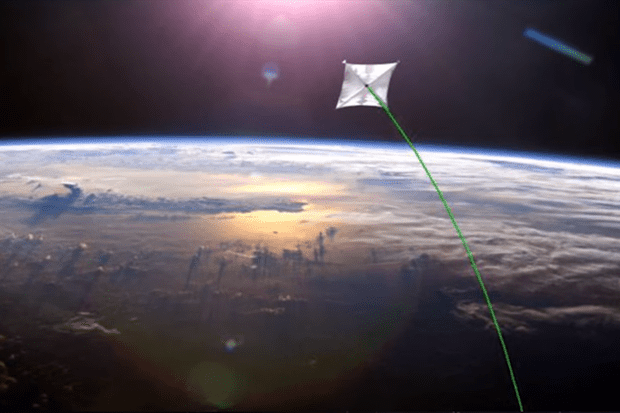Depending on the alignment of Mars and Earth, as well as the speed of propulsion, a spacecraft could reach the Red Planet as soon as 150 days. So far, NASA spacecraft have made 13 trips to Mars, with seven landings. The most recent — that of the Curiosity rover — took 253 days from launch on Earth to touchdown on Mars. There’s now reason to believe, however, that this journey could be significantly made faster to the point it only takes 3 days, according to a NASA researcher.

This could be possible using a ‘photonic propulsion’ system, says NASA scientist Philip Lubin. A massive laser based on Earth would fire bursts of photons into the ‘sail’ of the spacecraft and accelerated it up to 26% the speed of light, which is unheard of in space flight. But that’s only for a tiny object with a 1 meter solar sail. Larger, more practical crafts, would be accelerated to between 1-3% the speed of light, which is still fantastic.
Spacecraft are launched from Earth by converting the chemical energy in rocket fuel into thrust. This process is inefficient, Lubin says, when compared to electromagnetic acceleration. This technology is currently used in research facilities to accelerate particles close to the speed of light. Transferring this technology that can achieve relativistic speed from the micro to the macro world has proven to be quite a challenge.
Lubin and colleagues have now received a proof-of-concept grant from NASA to assess whether or not a photonic propulsion system for long distance space applications is viable.
Though photons have no mass, they do have momentum and energy. Once these reflect of a receiver, which could look something like a very thin sail, some of that energy is transferred, pushing the craft. While this pressure is minute, the catch is that it builds momentum over time.
The Planetary Society, a non-profit organization founded by Carl Sagan and now coordinated by Bill Nye, is working with a satellite-sized object called the LightSail. The sail is made out of thin Mylar and when stretched out measures 345 square feet. LightSail is scheduled to be delivered to Georgia Tech for integration into the Prox-1 spacecraft in March, and should make for a great test.
While the LightSail will be powered by the sun’s rays, Lubin’s system involves firing a high power laser array called DE-STAR (Directed Energy System for Targeting of Asteroids and ExploRation). Energy would come from a PV solar array. Using the same energy used today to launch rockets into space, Lubin says a 100kg object could reach Mars in three days or one month for a large craft — the kind able to carry humans. “There is no known reason why we could not do this,” said Lubin.
“As an example, on the eventual upper end, a full scale DE-STAR 4 (50-70 GW) will propel a wafer scale spacecraft with a 1 m laser sail to about 26% the speed of light in about 10 minutes (20 kgo accel), reach Mars (1 AU) in 30 minutes, pass Voyager I in less than 3 days, pass 1,000 AU in 12 days and reach Alpha Centauri in about 15 years. The same directed energy driver (DE-STAR 4) can also propel a 100 kg payload to about 2% c and a 10,000 kg payload to more than 1,000 km/s,” Lubin wrote in a paper.
Of course, this could prove to be our best shot at exploring other solar systems as well.
“The human factor of exploring the nearest stars and exoplanets would be a profound voyage for humanity, one whose non-scientific implications would be enormous,” writes Lubin. “It is time to begin this inevitable journey beyond our home.”
How in the world Lubin and team will solve the technical challenges is beyond me at this point, but we will follow these developments with great interest.






